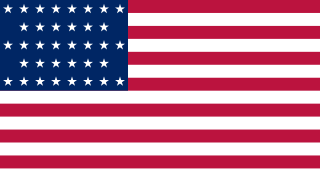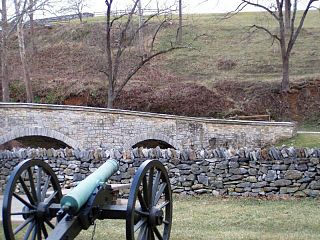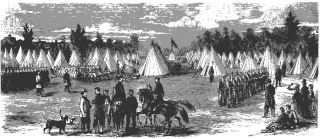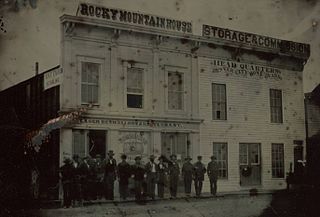 W
WThe 1st Illinois Cavalry Regiment was a cavalry regiment that served in the Union Army during the American Civil War and Spanish–American War.
 W
WThe 2nd Northumberland Rifle Volunteer Corps, also referred to as the Tynemouth Rifles, was an infantry unit of Britain's part-time force, the Territorial Army. The corps was raised during the expansion of the Volunteer movement in the 1850s and then served with the Territorial Force during the First World War. It converted to an anti-aircraft role just prior to Second World War, and continued to serve until it was amalgamated in 1950.
 W
WThe 1st Battalion Arkansas Volunteer Infantry (1862) was an infantry battalion that served in the Union Army during the American Civil War. Although Arkansas joined the Confederate States of America in 1861, not all of its citizens supported secession.
 W
WThe 1st Colorado Infantry was a volunteer infantry regiment of the United States Army formed in the Colorado Territory in 1861 and active in the American West in the late 19th century.
 W
WThe 6th Battalion, Royal Welch Fusiliers, was a Welsh unit of the British Army's auxiliary forces. Formed in 1908, from Volunteer units that dated back to 1860, it fought at Gallipoli), in Egypt and Palestine during World War I, and in the campaign in North West Europe during World War II. Postwar it was converted to the anti-aircraft artillery role, then reverted to infantry in 1956 after it amalgamated with a neighbouring unit.
 W
WThe 6th Battalion, Royal Welch Fusiliers, was a Welsh unit of the British Army's auxiliary forces. Formed in 1908, from Volunteer units that dated back to 1860, it fought at Gallipoli), in Egypt and Palestine during World War I, and in the campaign in North West Europe during World War II. Postwar it was converted to the anti-aircraft artillery role, then reverted to infantry in 1956 after it amalgamated with a neighbouring unit.
 W
WThe 3rd Regiment Arkansas Volunteer Infantry was an infantry regiment that served in the Union Army during the American Civil War.
 W
WMembers of the three-month service 3rd Missouri US Reserve Corps Infantry Regiment who chose to reenlist in September 1861, when their unit was mustered out of service, were reorganized as the 3rd Missouri US Reserve Corps Infantry Regiment under the command of Colonel Charles A. Fritz, who had been the original regiment's lieutenant colonel.
 W
WThe 21st Louisiana Infantry Regiment, also called the McCown Regiment, was an infantry regiment from Louisiana that served in the Confederate States Army during the American Civil War. Six of its companies formed the 5th Louisiana Infantry Battalion organized in September 1861, which fought in the Battle of Belmont as cannoneers. The battalion was brought up to regimental strength, becoming the 21st Louisiana, by the addition of four companies in February 1862. After service at Island Number Ten, Fort Pillow, and the Siege of Corinth, the regiment was disbanded due to its high desertion rate.
 W
WThe 7th Regiment New York Volunteer Cavalry, the "Northern Black Horse Cavalry" and more properly designated 1st Regiment New York Mounted Rifles, was a cavalry regiment of the Union Army during the American Civil War.
 W
WThe 8th Massachusetts Battery was an artillery battery that served in the Union Army during the American Civil War. The units personnel enlisted for six months in 1862, but during its brief service it participated in the battles of Second Bull Run, Chantilly, South Mountain, and Antietam. The battery was mustered out on 29 November 1862, having lost one enlisted man killed in action and 10 men dead of disease.
 W
WThe 10th Rhode Island Infantry Regiment served for three months in the summer 1862. It served, along with its sister units - the 9th Rhode Island Infantry Regiment and the 10th Rhode Island Battery, in the defenses of Washington D.C..
 W
WThe 11th Independent Battery Wisconsin Light Artillery, was an artillery battery that served in the Union Army during the American Civil War.
 W
WThe 11th Regiment New York Volunteer Infantry was an infantry regiment of the Union Army in the early years of the American Civil War. The regiment was organized in New York City in May 1861 as a Zouave regiment, known for its unusual dress and drill style, by Colonel Elmer E. Ellsworth, a personal friend of U.S. President Abraham Lincoln. Drawn from the ranks of the city's many volunteer fire companies, the unit was known alternately as the Ellsworth Zouaves, First Fire Zouaves, First Regiment New York Zouaves, and U.S. National Guards.
 W
WThe 21st Louisiana Infantry Regiment, also called the McCown Regiment, was an infantry regiment from Louisiana that served in the Confederate States Army during the American Civil War. Six of its companies formed the 5th Louisiana Infantry Battalion organized in September 1861, which fought in the Battle of Belmont as cannoneers. The battalion was brought up to regimental strength, becoming the 21st Louisiana, by the addition of four companies in February 1862. After service at Island Number Ten, Fort Pillow, and the Siege of Corinth, the regiment was disbanded due to its high desertion rate.
 W
WThe 71st Regiment Illinois Volunteer Infantry was an infantry regiment that served in the Union Army during the American Civil War.
 W
WThe 5th Battalion, King's Regiment (Liverpool) was a volunteer unit of the King's Regiment (Liverpool) of the British Army, part of the Territorial Force (TF).
 W
WThe Denver City Home Guard was a formation of militia during the American Civil War, raised from Denver City in the Colorado territory. The unit was mustered out in April 1862.